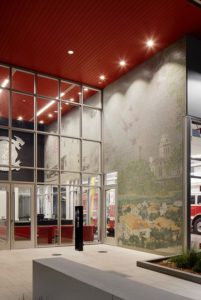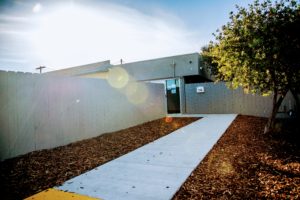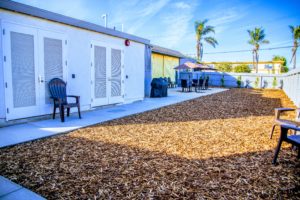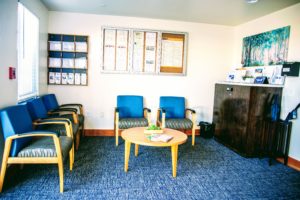Congratulations to all the counties and project staff for producing some amazing examples of public works. Due to the COVID19 Pandemic, the Annual Conference was vertually and awards mailed to recipients. Here are the winners of the CCAEA Public Project of Excellence Awards.
This program is designed to publicly recognize your efforts, but in the midst of the current Pandemic, the Annual Conference and Awards Presentations have been canceled. We collectively look forward to the 2021 Conference, when we can all gather to celebrate in person next year’s awards.
BTW: Get ready for next year with your submissions…the Call for Entries will be sent toward the end of the calendar year. Remember, it’s FREE to enter; for details email CCAEA today.
The CCAEA Board acted as the jury this year. They abstained from voting on projects represented by their own county.
With the 8th year of the awards program completed; we want to keep everyone informed about prior year recipients, read below for more detail on these exciting projects and the awardees.
For 2014 Winners…click here.
For 2015 Winners…click here.
For 2016 Winners….click here
For 2017 Winners….click here
For 2018 Winners….click here
For 2019 Winners….click here
There was no 2020 Awards Program….
Large County Award: Alameda County
Cheeryland Fire Station
The new Cherryland Fire Station is the first of seven fire stations and a training facility constructed for the Alameda County Fire Department by the County of Alameda GSA. Located in a small community near Hayward in unincorporated Alameda County, the state-of-the-art, 11,860 square foot facility is a one-company station designed with community input to fit the physical context of a redeveloping mixed-use neighborhood within the strict site constraints of its narrow. limited .87 acre parcel. Constructed and occupied in 2017 for a$1,2M total project budget, the simple building will easily provide full fire services with a capacity for conversion in the future of its interior space for medical support functions. Strong imagery and colors of the efficient wood-frame structure define the building as a community centerpiece and it incorporates striking public art memorializing the historic fire department of the area in an 84,000 glass tile mosaic.

Main facade of Cheeryland Fire Station

Cheeryland Fire Station Main Entry.
Santa Maria Residential Crisis Center
This project created a safe clinical environment for individuals of whom are in crisis due to serious and persistent mental illness. The program operates 24/7 365 days a year. The site and build were acquired by the County of Santa Barbara in an urban area of the City of Santa Maria. The property is comprised of two parcels, one with an existing building, the other a vacant lot. The building was remodeled to include reception area, private offices for medical staff or consultation, common areas, kitchen, laundry, and sleeping areas for a programmed population of ten individuals. The vacant lot was converted into parking and a secure outdoor area that includes space for structured activities or leisure time.

Santa Maria Residential Crisis Center — Secure and private entry.

Santa Maria Residential Crisis Center–Group Area

Santa Maria Residential Crisis Center–Kitchen
There where no small county submissions this year.
The Grand Award is granted by the Jury based upon their assessment of the Projects of the Year awardees and that by the consensus of the Jury exceeds the requirements and best demonstrates the spirit of the Awards Program.

Santa Maria Residential Crisis Center – outdoor space

Santa Maria Residential Crisis Center – Waiting Area.

Santa Maria Residential Crisis Center – Group Eating Area
With the increased levels of stress and community unrest, more people are experiencing mental crises. This project provides a safe environment where these individuals may receive the help they need. Some of the individuals that receive services at this new facility are brought to the Crisis Center by law enforcement, or referred by a medical professional. Regardless of how the person arrives, personalized care is given in a compassionate, supportive, and professional environment.
The operations are a collaborative effort between the county government, law enforcement, local medical institutions, and the private sector service providers. This collaborative effort maintains the focus on care for the individual with the highest degree of safety for the person and community. Additionally, this approach will keep the person from being placed into the jail system, where they likely are not treated for the underlying conditions that caused them to be detained. This facility and its program ultimately save the taxpayer the enormous cost of housing these individuals in either a hospital or jail.
The project created a modestly sized crisis treatment facility from an existing 3,500 square foot building situated on a double lot in an urban area of the City of Santa Maria. The existing building was being used as an informal community center with its principal space a large open area with supportive spaces arranged around this open area. There were no exterior features supportive of the community center use.
The project, while seeming straightforward, was complicated from two perspectives: structurally and financially. It turned out that the original building did not have a proper foundation, so one had to be installed without damaging the just completed interior work. The Community Center use had minimal support services, utilities, and restroom facilities. Installing the infrastructure to support additional restrooms required the replacement of the plumbing system. The project engineers discovered that the finish floor of the building was below the acceptable elevation that would allow sufficient fall in the drainage system. The sewer lateral had to be replaced and connected farther away from the building to allow drainage to work. There were many other complicating issues that delayed the project completion, each requiring the design team to collaborate to solve the challenges.
Funding was complicated by the requirements of grant conditions. Some work could be done with one grant, but not another. Work on one element had to be completed before another grant contract could be signed. Navigating this funding maze took the extra time and effort of the project manager.
Finally, the project is located within a City jurisdiction. This complicates the processing of permit authorizations and which jurisdiction has oversight of what portion of the project. Two telephone/power poles had to be adjusted to accommodate the parking configuration. This took coordination between power, telephone and cable utilities—adding months of time to the project schedule.
There was no Jury Award presented this year.
There was no People’s Choice Award presented this year.